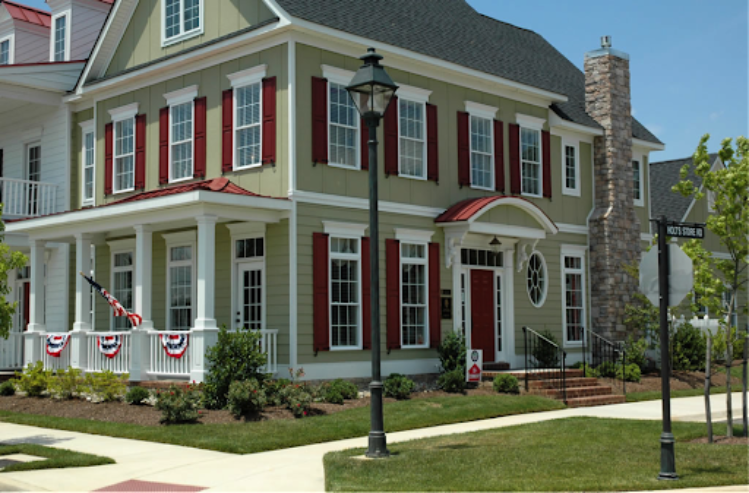Outfitting fiber cement siding corners involves performing the proper installation, selecting the right materials, and making important stylistic decisions that will impact the curb appeal of the home. Siding is an essential part of the structure that serves both practical and aesthetic purposes. Before you start doing the corners on any siding renovation project, consider these aspects of fiber cement siding first.

Siding Provides Important Defense Against Weather
Siding is perhaps one of the most valuable features a structure has. Serving as the outermost barrier, siding is the first line of defense against many outdoor threats. Sun, water, wind, ice, rodents, and accidental impact are all serious threats that can cause significant damage to an unprotected home.
For this reason, longevity, durability, and resistance to water, sunlight, and temperature changes should influence a homeowner’s decision of what siding product to select — throughout the exterior, and along the corners. Maintenance issues also need to be considered, since siding damage and deterioration should be addressed as soon as possible. When damage goes ignored, the cost to repair the siding successfully can skyrocket.

Not All Siding Performs the Same
Not all materials perform the same when it comes to siding and siding corners. Wood often requires constant upkeep and repair, since it is more susceptible to water damage and insect infestation. Likewise, vinyl is prone to tear away under heavy wind gusts, leaving exposed beams and open areas of the structure. Both wood and vinyl are also susceptible to color fading from sun damage.
Fiber cement is, by far, a better choice for siding and siding corners because of its enhanced strength and durability. It also lacks the flammability of wood and vinyl siding. Fiber cement siding provides a stronger defense against common weather threats, making it a longer-lasting product overall. Plus, with less wear and tear, fiber cement siding is considered a very low-maintenance product.

The Importance of Installing Fiber Cement Lap Siding Corners Correctly
Though fiber cement is a clear winner over other siding corner materials, it still needs to be installed precisely in order to perform the way it’s designed to. If you’re not familiar with how to install fiber cement siding on corners, it’s best to do some research before beginning. This is especially true if you’re using two different materials sources, like vinyl siding with fiber cement corners. In that case, it’s incredibly important that you understand how to match up the vinyl siding to cement fiber siding on the corners, because any gaps or open seams can create big problems down the line.
In fact, faulty installation can sabotage an otherwise high-performance product. Gaps and open seams near the corners can cause prime potential for water to seep in and damage the structure. Loose corner pieces are also more likely to be torn away during heavy wind gusts. Learning how to install fiber cement siding on corners properly can ensure that you’re getting the best performance out of the product.

Mitered Corners with Fiber Cement Lap Siding
This style is particularly popular for homeowners who like a clean, minimalist exterior style. Allura does not recommend mitering fiber cement siding. One way to create a seamless look with planks is to lace corners. This is called a laced or prairie-style corner. Laced corners are created by mating each successive course of siding with its counterpart on the adjoining wall. You should consult a building professional before attempting this look.

Fiber Cement Corners with Trim Finish
Another way to approach fiber cement siding corners is to introduce a trim finish. Trimming the outside corners is a great idea if you prefer a more emphasized architectural look for the home’s exterior. Trim also provides an extra layer to cover the corner seams. Most fiber cement trim is easy to install and looks great against a variety of siding styles, including horizontal lap siding, shake, and board and batten.

Stylistic Use of Trim on Fiber Cement Siding Corners
Fiber cement corner trim can also be used as a distinct exterior design element. Trim can be matched with shutters, roofing, soffit, windowboxes, entryway banisters, and other exterior features to create color coordination throughout the home.
White is a popular choice for fiber cement siding corners because it provides great definition against almost any color of siding. Beige and brown are also common trim colors to use on fiber cement siding corners. Since fiber cement siding is available in a wide range of colors and styles, including natural-looking wood grain patterns, it can be fun to explore all the options out there and create a custom look for your home.
Contact Allura today to learn more about fiber cement siding choices and corner techniques for your home.




